Highlights
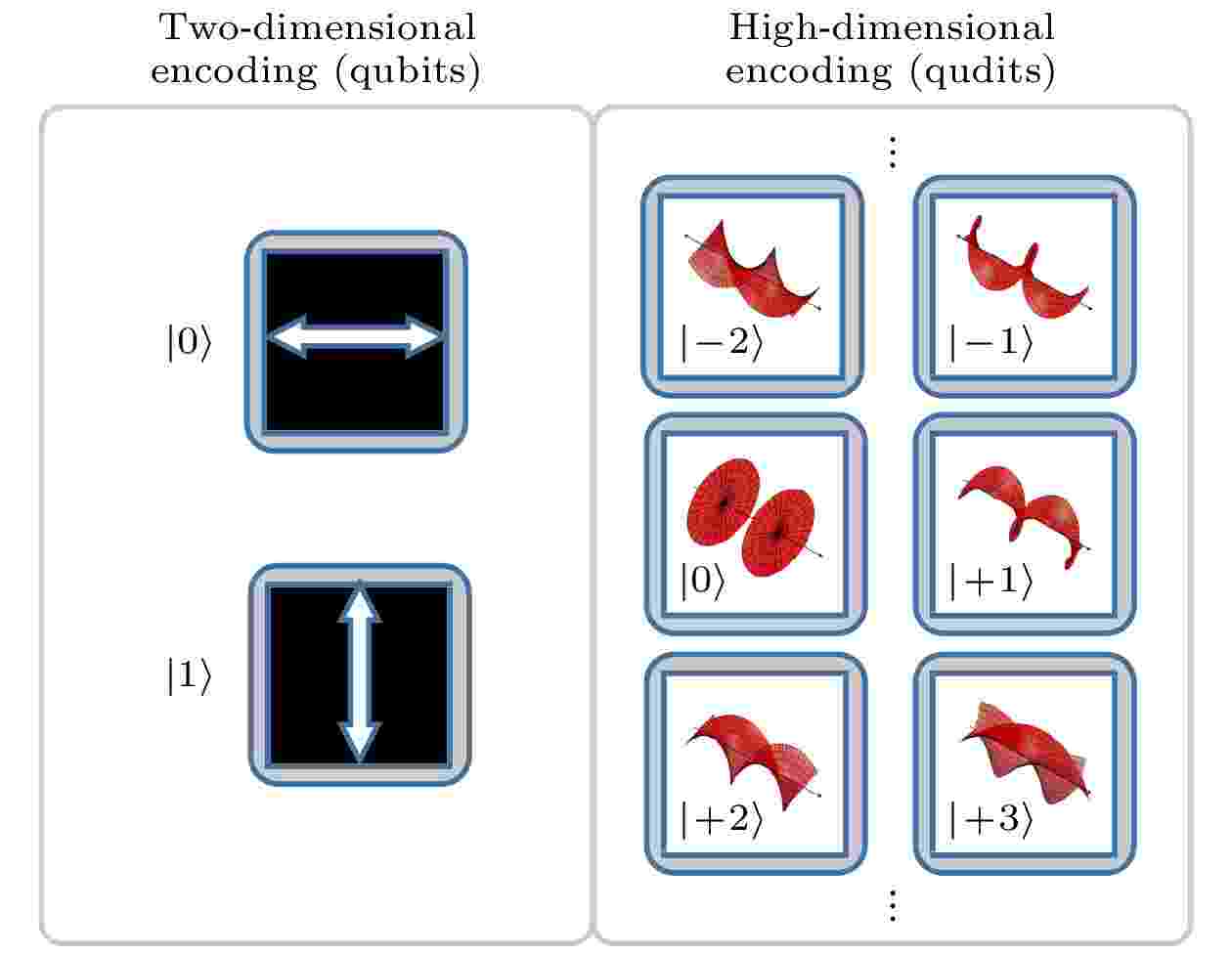
The 90th Anniverary ofActa Physica Sinica·COVER ARTICLE
COVER ARTICLE
2024, 73 (16): 164204.
doi:10.7498/aps.73.20240791
Abstract +
Quantum light sources are one of key devices for quantum information processing, and they are also the important foundation for applications such as in quantum computing, quantum communication, and quantum simulation. Improving the capacity of quantum information coding by using the quantum light source is a major challenge in the development of quantum information technology. Photons with a helical phase front can carry a discrete, unlimited but quantized amount of orbital angular momentum (OAM). The infinite number of states with different OAMs can greatly increase the capacity of optical communication and information processing in quantum regimes. To date photons carrying OAM have mainly been generated by using bulk crystals, which limits the efficiency and the scalability of the source. With the advancement of quantum photonic technology, many significant quantum photonic devices can now be realized on integrated chips. However, creating high-dimensional OAM quantum states at a micro-nano scale is still a challenge. And the research of harnessing high-dimensional OAM mode by using integrated quantum photonic technologies is still in its infancy. Here, the authors review the recent progress and discuss the integrated quantum light sources with OAM. The authors introduce the research progress of using OAM for both single photons and entangled photons and emphasize the exciting work on pushing boundaries in high-dimensional quantum states. This may pave the way for the research and practical applications of high-dimensional quantum light sources.
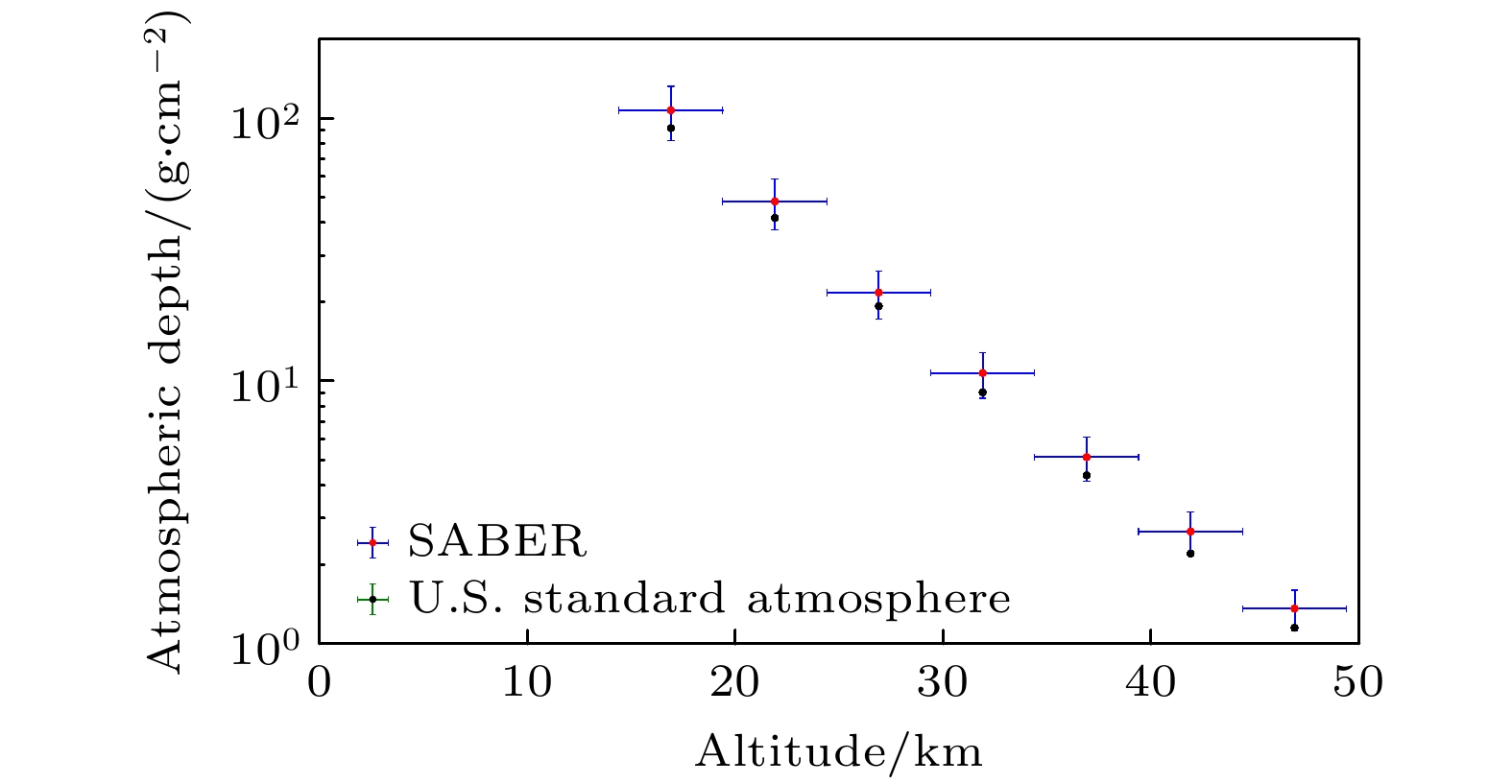
EDITOR'S SUGGESTION
2024, 73 (16): 169201.
doi:10.7498/aps.73.20240679
Abstract +
High altitude cosmic ray observatory (LHAASO) is located at Haizi Mountain in Daocheng county, Sichuan province, China. Its wide field of view Cherenkov telescope array (WFCTA) is primarily used to study cosmic rays through observing the Cherenkov light signals produced during extensive air showers. Calibration, simulation, and reconstruction of WFCTA are all related to atmospheric depth. The atmospheric depth model currently used is the US standard atmosphere depth profile model. In this study, the US standard atmosphere depth profile model is compared with the atmospheric depth profile recorded by the infrared radiometer SABER carried by the satellite TIMED at LHAASO from 14 km to 50 km, and also with the atmospheric depth recorded by the ground meteorological station at LHAASO. The atmospheric depth obtained from the US standard atmosphere model is consistently smaller. The MSISE-90 atmospheric model describes the neutral temperature and density from the Earth's surface to the thermosphere. Further research shows good consistency between the MSISE-90 atmospheric model and the atmospheric depth recorded by TIMED/SABER and the ground standard meteorological station at LHAASO. According to the MSISE-90 atmospheric model, the average atmospheric depth profile at LHAASO is lowest in January, followed sequentially by February, March, April, November, and December, which are also the optimal observation months for WFCTA operation. The atmospheric boundary layer is highest in April, with the diurnal variation of atmospheric depth being about 2%. Using the functional form of the US standard atmosphere odel, the monthly atmospheric depth profile of the LHAASO site is obtained by fitting an atmospheric depth profile of 4.4 to 100 km per month. And the comparison between the lateral distribution of the Cherenkov photons produced by 100 TeV cosmic-ray protons incident at a zenith angle of 30° in the MSISE-90 atmospheric model and that in the US standard atmosphere model shows that their maximum difference reaches about 20%.
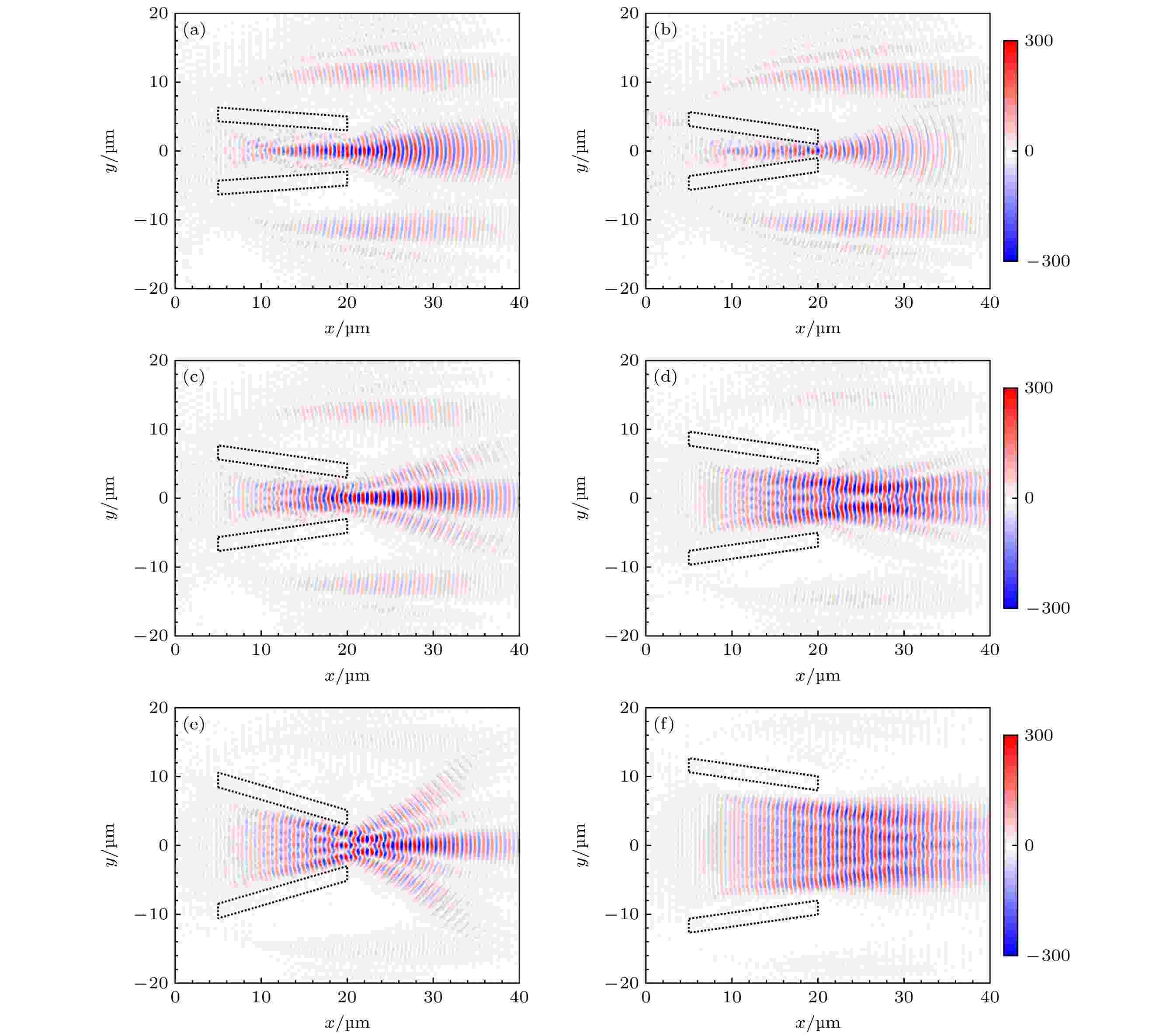
EDITOR'S SUGGESTION
2024, 73 (16): 165202.
doi:10.7498/aps.73.20240696
Abstract +

EDITOR'S SUGGESTION
2024, 73 (16): 160502.
doi:10.7498/aps.73.20240784
Abstract +
Many active substances in nature are in complex environments, such as animal populations passing through the jungles, microorganisms migrating in the soil, and bacteria designed to sense the porous environment of tumors. The behavior of active substances in complex environments is a subject worth exploring, because they have great application significance in biophysics, medical engineering, and industrial fields. In this work, we use active dumbbells to represent bacteria and other active substances with shape anisotropy, and use Langevin dynamics simulation to study their permeation behaviors in finite porous media. We find that under low temperature and appropriate activity, active dumbbells can aggregate inside and outside the medium and form four stable aggregation structures, they being hollow giant aggregation, hollow aggregation in medium, dense giant aggregation, and dense aggregation in medium. The aggregation is caused by the small space of the medium region, and the geometric trap is easily formed when the active dumbbells meet in the medium. Unlike motility-induced phase separation, the formation of such an aggregation relies on the assistance of obstacles. The persistence of directional motion determines the degree of aggregation of active dumbbells. There are significant differences among the four aggregation structures in density distribution, polar order parameter, and thermodynamic temperature inside and outside the medium. Under certain conditions, the disorder of medium arrangement can promote the aggregation behavior of active dumbbells, and the increase of lattice constant makes it easier for active dumbbells to form dense aggregation. Our research findings contribute to a more in-depth understanding of the life activities of active substances in complex environments, thus providing new ideas for designing microfluidic devices, drug delivery and other medical operations.
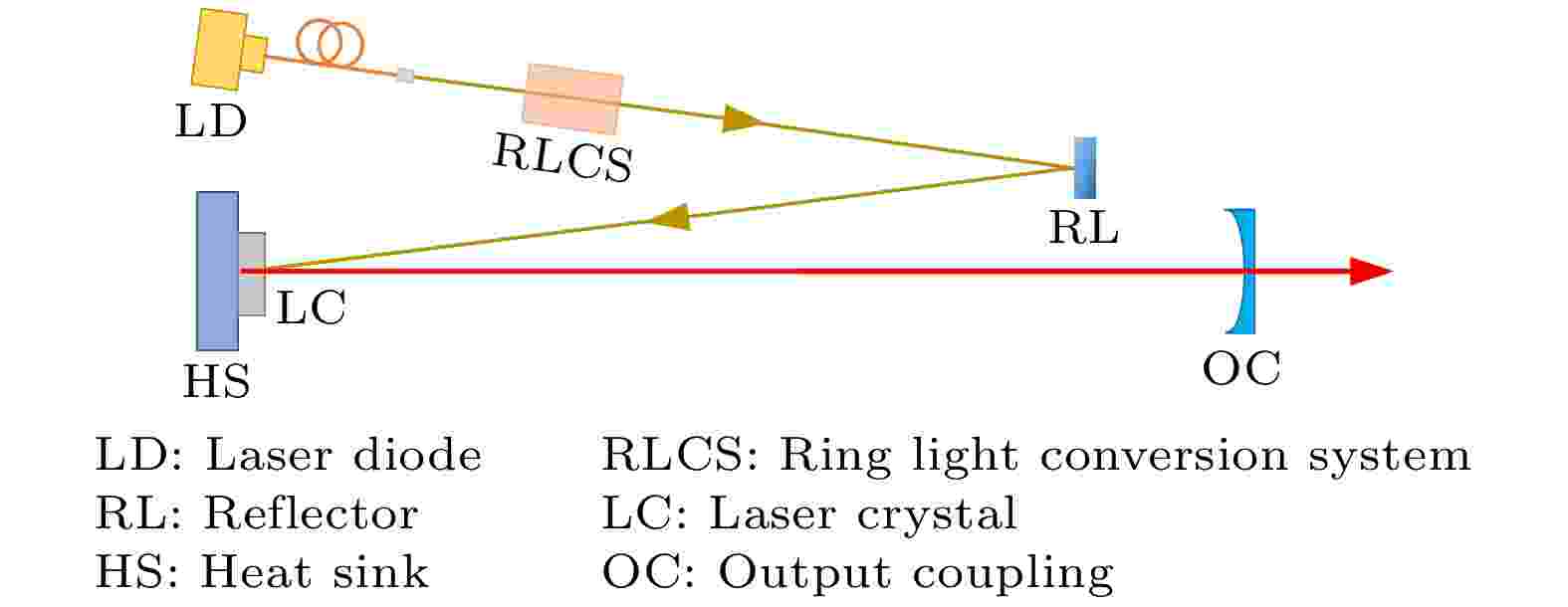
EDITOR'S SUGGESTION
2024, 73 (16): 164206.
doi:10.7498/aps.73.20240757
Abstract +
Optical vortex beam has wide applications in areas of optical communication, lidar detection and optical trapping. To increase the operating distance, a high-power vortex laser source is necessary in these applications. However, the purity of the output vortex beam decreases with the pump power increasing due to the thermal effect of the laser medium. Therefore, modal field degeneration induced by thermal effect of laser medium has become a key problem in high-power vortex solid-state laser. To investigate this modal field degeneration, the heat transfer and thermal deformation model of an annular beam end pumped thin-disk vortex laser (Fig. (a)) is established. The phase difference of the thermal effect is calculated based on this model. Then, the quadratic term is separated from the phase difference. The non-quadratic term, as a small perturbation, is substituted into the diffraction integral equation of the laser cavity. The modal field structure is obtained by using the perturbation method. The variations of the modal structure with pump power, absorption coefficient and crystal thickness are investigated for three kinds of laser crystals, i.e. Nd:YAG, Nd:YLF and Nd:YVO4. The results show that the modal field under thermal effect presents obvious deviation from the ideal mode at high power, and the modal structure shows that it contains many higher-order radial modes, with the angular mode order unchanged. Hence, the radial modal spectrum is broadened by the thermal effect. For an ideal vortex laser without thermal effect operating on the radial mode order 0 and angular mode order 1, Fig. (b) shows the modal structures with thermal effect under different pump power values with a laser crystal thickness of 1 mm. The ratio of the higher-order modes increases and the modal structure becomes more and more complex with the pump power increasing. The ratios of the ideal mode are 0.99, 0.97, 0.90, 0.79 and 0.61, under the pump power of 10 W, 20 W, 40 W, 60 W and 100 W, respectively. Moreover, the Nd:YVO4laser has the largest and the Nd:YAG laser has the smallest modal spectrum broadening under the same pump power. Figure (c) shows the variation of the modal purity with the pump power. The modal purity of the Nd:YVO4and the Nd:YLF laser decrease to 0.35 and 0.44 at the pump power of 100 W, respectively. We also investigate the modal structures under different absorption coefficients and crystal thickness values. A larger absorption coefficient or a smaller crystal thickness leads to a larger radial modal spectrum broadening and a smaller modal purity. These results indicate that in the design of high-power thin-disk vortex laser, it is necessary to comprehensively optimize the disk thickness and the absorption coefficient, and consider modal spectrum broadening as well.
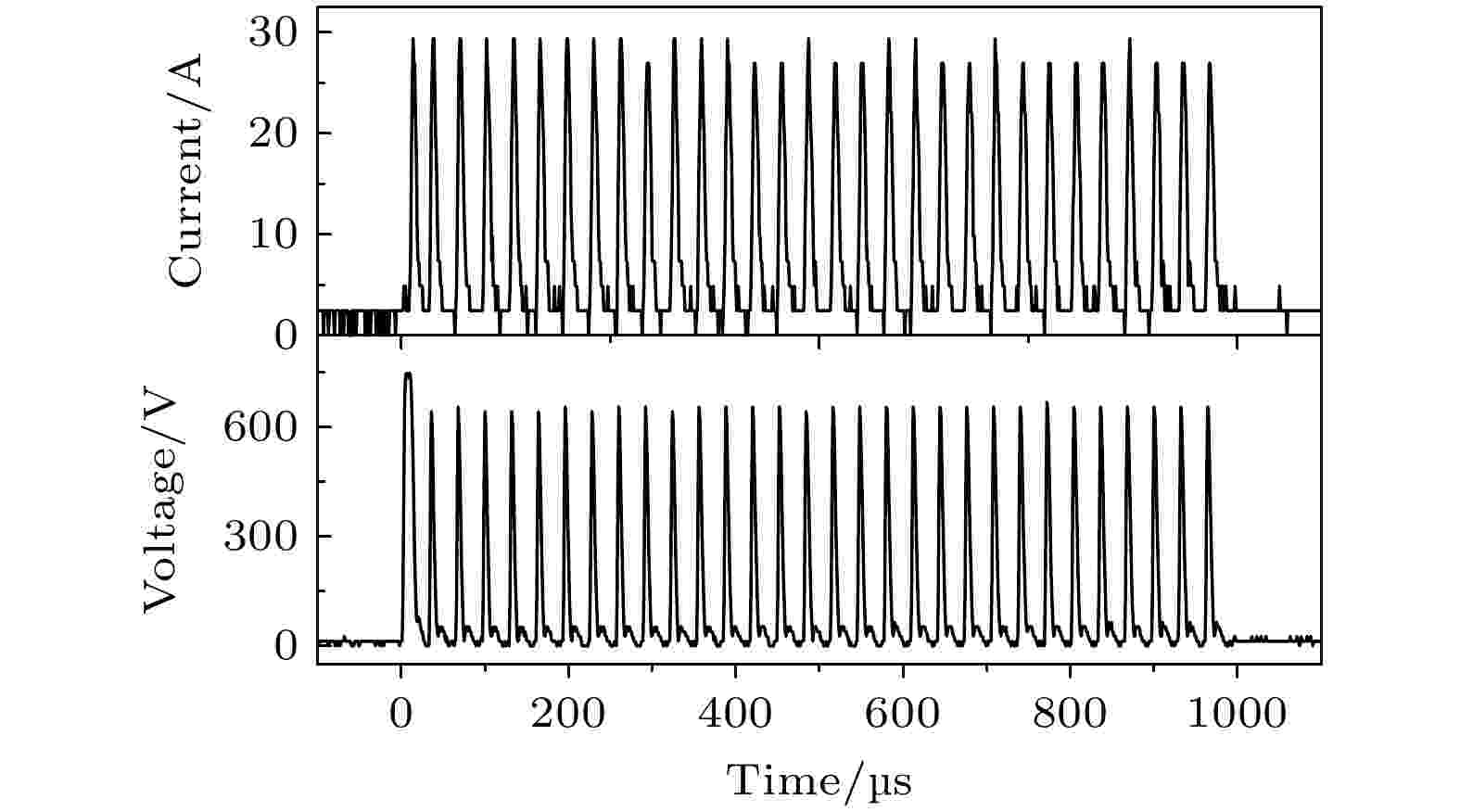
EDITOR'S SUGGESTION
2024, 73 (16): 165201.
doi:10.7498/aps.73.20240364
Abstract +
A global model for deep oscillation magnetron sputtering (DOMS) discharge is established to investigate the plasma characteristics in the ionization region. Target voltage and current waveforms with micropulse on-timeτonof 2–6 μs and charging voltage of 300–380 V are acquired and used as an input of the proposed model. The effects of micropulse on-time and charging voltage on the plasma are investigated. Atτon= 2 μs, the DOMS plasma density oscillates with the discharge current waveform. The plasma is mainly composed of Ar+ions though the ionization fraction of Ar is only 2%. The proportion of Cr+ions is lower but has a relatively high ionization fraction of 12%, and Cr2+ions are negligible. The peak plasma density increases from 1.34×1018m–3atτon= 2 μs to 2.64×1018m–3atτon= 3 μs and the metal ionization fraction increases to 20%. Further increasing the on-time leads the peak density and ionization fraction to slightly change. When the charging voltage increases from 300 V to 380 V atτon= 6 μs, the peak plasma density increases linearly from 2.67×1018m–3to 3.90×1018m–3, and the metal ionization fraction increases from 21% to 28%. The gas rarefaction occurs in the ionization region for DOMS discharge. The gas density oscillates in the initial stage of macropulse, and 5–6 micropulses later it reaches dynamic equilibrium. The Ar density dynamics shows that the Ar consumption is mainly caused by electron impact ionization, followed by electron impact excitation, and the consumption rate caused by sputter wind is about 10% of the electron impact ionization. The typical metal self-sputtering phenomenon of high power impulse magnetron sputtering (HiPIMS) also appears in the DOMS discharge. The peak value of self-sputtering parameter increases linearly with the peak power density rising. This suggests that the peak power density is one of the important parameters to manipulate the metal self-sputtering process in the DOMS discharge. The peak value of self-sputtering parameter reaches up to 0.20, indicating that a certain degree of metal self-sputtering occurs. The plasma density and the ionization fraction of the depositing flux are improved, which relieves the shadowing effect during conventional magnetron sputtering as a result of low ionization degree of sputtered metal.
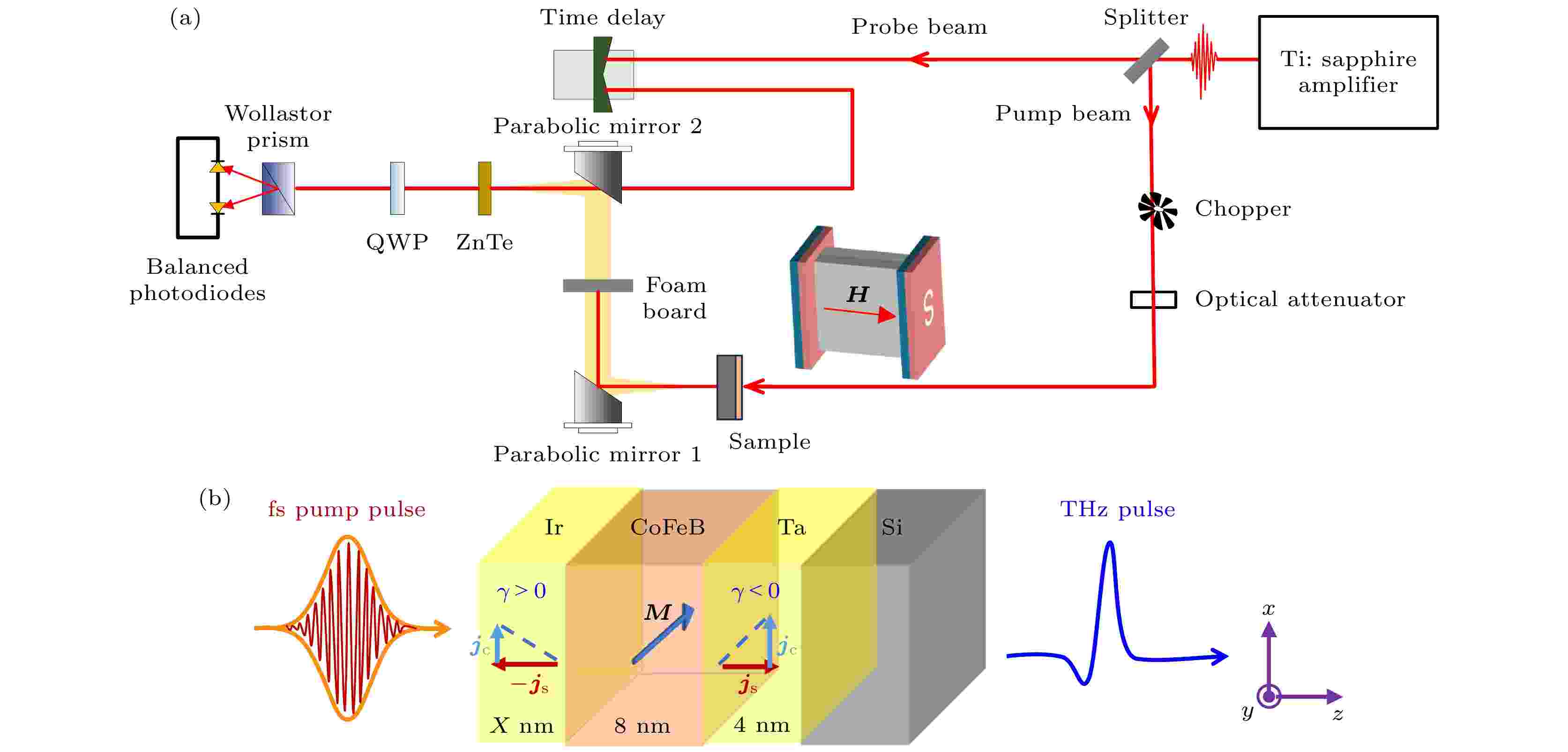
EDITOR'S SUGGESTION
2024, 73 (16): 167801.
doi:10.7498/aps.73.20240703
Abstract +
Terahertz spectroscopy and imaging have many applications, so the generation of broadband terahertz radiation is very important, but now it faces some challenges. Opto-spintronic terahertz emitters, composed of nanometer-thin magnetic multilayer, can produce high-quality broad-band terahertz pulses. Integration of opto-spintronic terahertz emitters onto the silicon wafers is the first step towards their usage in modern photonic devices. In this work, Ta/CoFeB/Ir heterostructures are deposited on thermally oxidized silicon wafers by dc magnetron sputtering. Under the illumination of a femtosecond laser pulse on the Ta/CoFeB/Ir trilayer heterostructure grown on silicon substrate, a spin current can be generated in the ferromagnetic layer due to the ultrafast demagnetization. The spin current is transported and injected into the neighboring non-magnetic metal layers of Ta and Ir. Consequently, the spin current can be converted into the charge current due to the strong spin-orbit coupling. The sub-picosecond transient charge current gives rise to the terahertz radiation that enters into the free space. The terahertz electric field is fully inverted when the magnetization is reversed, which indicates a strong connection between THz radiation and spin order of the heterostructure. The THz radiation from Ta/CoFeB/Ir heterostructure covers the 0.1–2.5 THz frequency range with a maximum value of about 0.64 THz. We also investigate the dependence of THz peak-to-peak value on the pump fluence. The THz emission is found to be saturated at a pump fluence of ~0.73 mJ/cm2. Our results demonstrate the existence of the strong spin-orbit coupling in the heavy metal Ir. Furthermore, we optimize the THz emission from the Ta/CoFeB/Ir heterostructure by changing the thickness of Ir layer. According to the thickness dependence of THz emission from the heterostructure, the propagation length of the spin current at THz frequencies is extracted to be about (0.59±0.12) nm, which is shorter than the GHz experimental measurement (~1.34 nm). Our experimental observation is consistent with that in the antiferromagnet IrMn layer, which may be attributed to different transport regimes. Theoretically, the optimized thickness values for CoFeB and Ir layers are 2.4 nm and 1.1 nm, respectively.
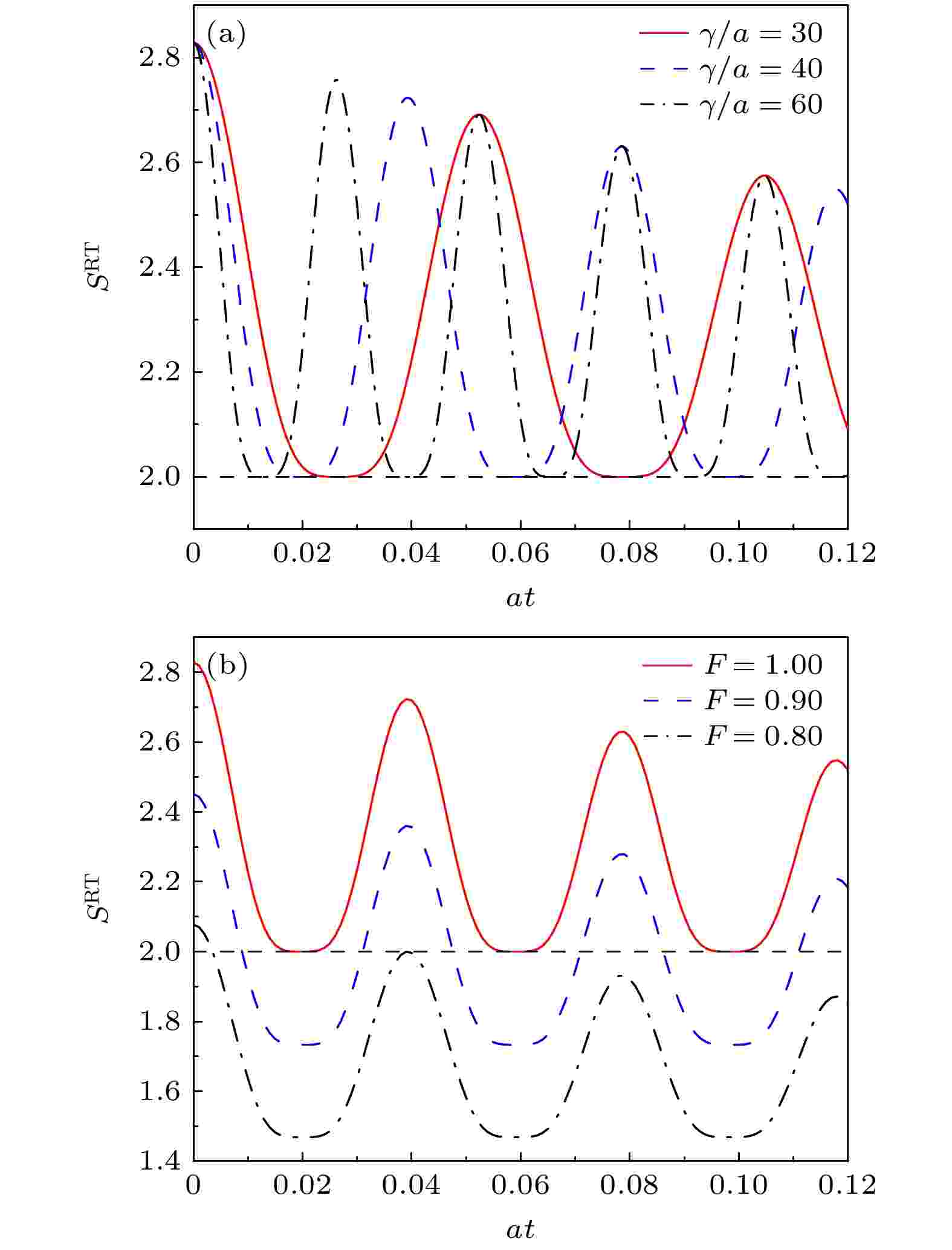
EDITOR'S SUGGESTION
2024, 73 (16): 160301.
doi:10.7498/aps.73.20240450
Abstract +
Research on whether quantum states retain quantum non-local correlation properties after evolving in non-Markovian environments has significant applications in the field of quantum information. In this work, we investigate the density matrix of quantum states evolving with time in various non-Markovian environments. Specifically, we examine two types of non-Markovian phase damping environments, namely random telegraph (RT) noise environment and Ornstein-Uhlenbeck (OU) noise environment, and non-Markovian amplitude damping (AD) environment. By utilizing the Clauser-Horne-Shimony-Holt (CHSH) inequality, a quantum non-local correlation testing of the Werner state after its evolution in these non-Markovian environments is conducted. The results show significant differences in the quantum non-local correlation testing results of the Werner state after evolving in different non-Markovian environments. Notably, the Werner state displays information backflow in the RT noise environment and the AD environment, resulting in periodic oscillations in its quantum non-local correlation testing. This suggests that under certain conditions, the quantum state can transition from a state without quantum non-local correlation back to a state with such a correlation as evolution time progresses. The results also show that the Werner state exhibits the information about backflow phenomena in RT noise environment and AD environment, leading to periodic oscillations in its quantum non-local correlation testing. Furthermore, these periods are inversely proportional to certain parameters, such as
$\sqrt {{{\left( {{{2\gamma } \mathord{\left/ {\vphantom {{2\gamma } a}} \right. } a}} \right)}^2} - 1} $
and
$ \sqrt {2{\varGamma \mathord{\left/ {\vphantom {\varGamma \gamma }} \right. } \gamma } - {{\left( {{\varGamma \mathord{\left/ {\vphantom {\varGamma \gamma }} \right. } \gamma }} \right)}^2}} $
. On the contrary, in the OU noise environment, no information about backflow is obtained, thereby leading the value of the quantum non-local correlation test to increase with evolution time increasing. In most of AD and OU noise environments, there exists a specific maximum evolution time
$\gamma {t_{\max }}$
in which successful quantum non-local correlation testing can be conducted. This maximum evolution time
$\gamma {t_{\max }}$
shows a nonlinear variation with fidelity increasing and an inverse variation with
$\varGamma /\gamma $
parameter increasing. In comparison, the maximum evolution time for successful quantum non-local correlation testing in the OU noise environment exceeds that in the AD environment under the same conditions, indicating that the AD environment exerts a more pronounced weakening effect on the quantum non-local correlation properties of the Werner state.

SPECIAL TOPIC—Precision spectroscopy of few-electron atoms and molecules
COVER ARTICLE
2024, 73 (15): 150201.
doi:10.7498/aps.73.20240554
Abstract +
In the precision spectroscopy of few-electron atoms, the generation of high-intensity metastable helium atoms and helium-like ions is crucial for implementing experimental studies as well as a critical factor for improving the signal-to-noise ratio of experimental measurements. With the rapid development of free-electron laser (FEL) and technology, FEL wavelengths extend from hard X-rays to soft X-rays and even vacuum ultraviolet bands. Meanwhile, laser pulses with ultra-fast, ultra-intense and high repetition frequencies are realized, thus making it possible for FEL to prepare single-quantum state atoms/ions with high efficiency. In this work, we propose an experimental method for obtaining high-intensity single-quantum state helium atoms and helium-like ions by using FEL. The preparation efficiency can be calculated by solving the master equation of light-atom interaction. Considering the experimental parameters involved in this work, we predict that the efficiencies of preparing metastable 23S He, Li+and Be2+are about 3%, 6% and 2%, respectively. Compared with the common preparation methods such as gas discharge and electron bombardment, a state-of-the-art laser excitation method can not only increase the preparation efficiency, but also reduce the effects of high-energy stray particles such as electrons, ions, and photons generated during discharge. Furthermore, combined with the laser preparation technique, the sophisticated ion confinement technique, which can ensure a long interaction time between the ions and laser, increases the efficiency of metastable Li+and Be2+by several orders of magnitude. Therefore, the preparation of high-intensity metastable helium and helium-like ions can improve the measurement accuracy of precision spectroscopy of atoms and ions. A new experimental method, based on FEL, to study the fine structure energy levels 23P of helium, has the potential to obtain the results with an accuracy exceeding the sub-kHz level. Thus, the high-precision fine structure constants can be determined with the development of high-order quantum electrodynamics theory. In order to measure energy levels with higher accuracy, a new detection technique, which can reduce or even avoid more systematic effects, must be developed. For example, the quantum interference effect, which has been proposed in recent years, seriously affects the accuracy of fine-structure energy levels. If the interference phenomenon of spontaneous radiation between different excited states can be avoided in the detection process, the measurement accuracy will not be affected by this quantum interference effect. High-intensity metastable atoms or ions in chemical reaction dynamics studies also have better chances to investigate reaction mechanisms. In summary, the FEL preparation of high-intensity metastable helium atoms and helium-like ions proposed in this work will lay an important foundation for developing cold atom physics and chemical reaction dynamics.
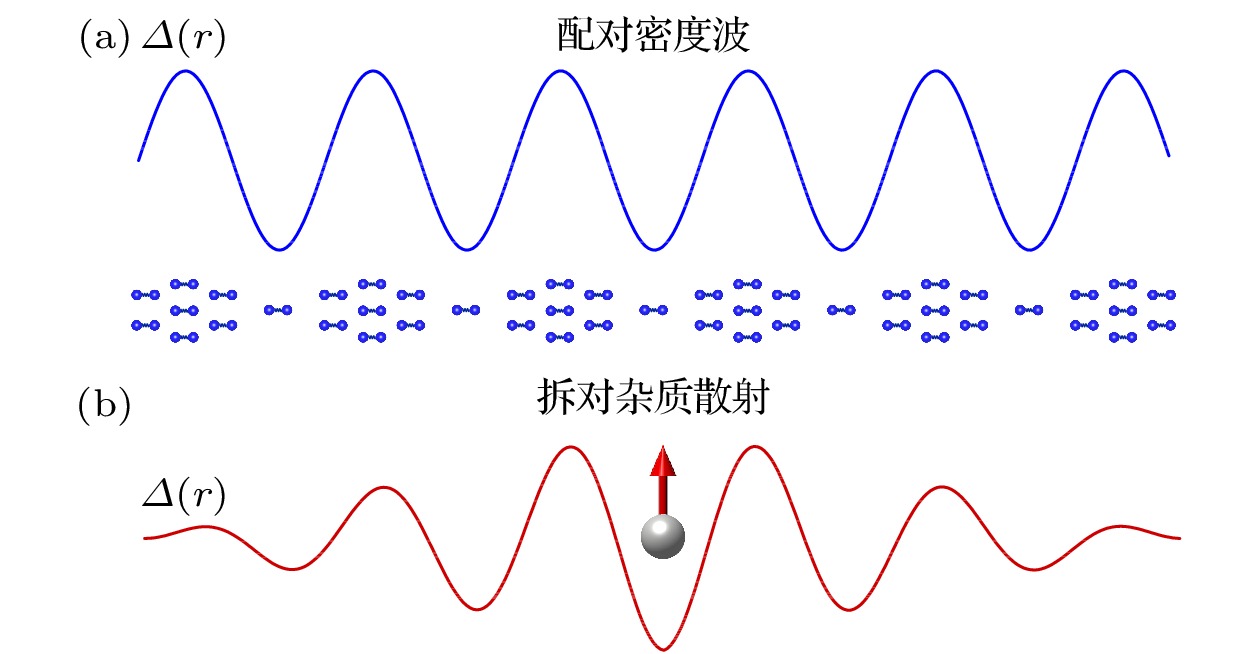
Abstract +
In his seminal work published inActa Physica Sinicain 1965, Yu Lu pointed out that the superconducting gap exhibits weak modulations near the pair-breaking magnetic impurity in a superconductor. In the past ten year, a series high-resolution scanning tunneling microscopy works reported weak superconducting gap modulations in certain superconductors and explained these phenomena as pair density waves. In line with Yu Lu’s discovery, Lee D H et al. pointed out that in many cases, the interference effect of pair-breaking scattering can also lead to superconducting gap modulations in space. We will discuss the distinction and unification of these two kinds of mechanisms, as well as their relevance to recent experimental observations.

- 1
- 2
- 3
- 4
- 5
- ...
- 169
- 170












